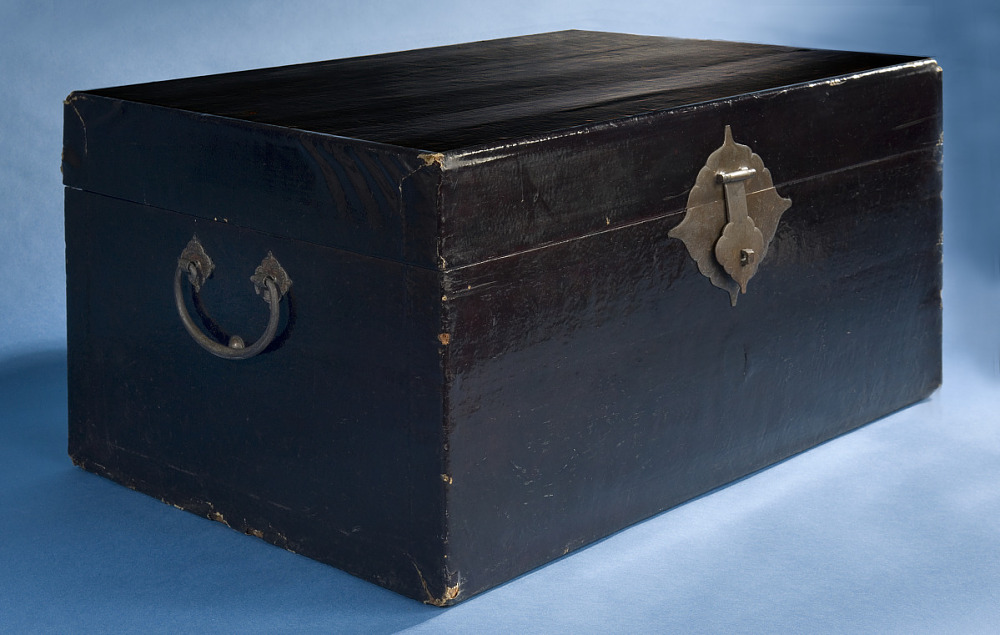As COVID-19 deaths spiked in 2020, Suzanne Firstenberg’s public art installation "In America: How could this happen…"
History Explorer Results (69)
Related Books (28)

Grade Range:
K-12
Resource Type(s):
Artifacts, Primary Sources
Date Posted:
9/3/2020
In 1906 Ng Shee Lee packed her clothes and belongings in this trunk and left China for America. It was a difficult trip. She slept next to the noisy engine room; arriving tired and sick in San Francisco she was met by the devastating 1906 earthquake. Ng Shee then made her way alone by train across C

Grade Range:
K-12
Resource Type(s):
Artifacts, Primary Sources
Date Posted:
9/3/2020
Mr. Lee only wore these slippers in his home or with his traditional Chinese clothes on special occasions. The slipper sole was thick, flat, inelastic, and shorter than the upper sole to give enough spring for walking. For much of his early life, the Chinese New Year was Lee’s only day of rest fro

Grade Range:
K-12
Resource Type(s):
Artifacts, Primary Sources
Date Posted:
9/3/2020
The most basic right of citizenship has been equal access and protection under the law. The fight to extend this right to all began before the Declaration of Independence proclaimed “all men are created equal,” and continues today.
Grade Range:
9-12
Resource Type(s):
Lessons & Activities
Date Posted:
5/1/2018
American Democracy: A Great Leap of Faith traces the unfolding of America’s experiment with government “of, by, and for the people” and illustrates the fact that democracy involves civic engagement and participation.
This exhibition and its
Grade Range:
5-12
Resource Type(s):
Lessons & Activities
Date Posted:
4/16/2018
#MyFellowCitizens asks students to think critically about what good citizenship means to them.
The learning begins with the guiding question: What does it mean to be a good citizen? Students investigate this question by looking at the Naturalization O

Grade Range:
K-12
Resource Type(s):
Artifacts
Date Posted:
4/16/2018
Though a key requirement of citizenship is learning English, many guides are still available in the native languages of new immigrants. The Foreign Language Information Service provided translations of these guides in thirteen European languages.

Grade Range:
K-12
Resource Type(s):
Artifacts
Date Posted:
4/16/2018
The reprint of Fortune Magazine’s “Issei, Nisei, Kibei”, which reviewed the war relocation program, reached a wide swathe of the United States and confronted Americans with the severe social issues taking place on the home front. Awareness of the prejudicial treatment of these specific citi

Grade Range:
K-12
Resource Type(s):
Artifacts
Date Posted:
4/16/2018
This Butsudan-Buddhist altar was made from scrap lumber in Jerome Relocation Center in Arkansas. Buddhism was among the religions that was practiced in the internment camps. However, it was not formally recognized in the camp or marked with a specific house of worship within the internment camp g

Grade Range:
K-12
Resource Type(s):
Artifacts
Date Posted:
4/16/2018
These identification cards were issued to residents of the internment camps. In order to exercise control and maintain surveillance over the population, internees were given family numbers and their physical characteristics were recorded.

Grade Range:
4-12
Resource Type(s):
Reference Materials, Primary Sources
Date Posted:
4/16/2018
February 2017 marked the 75th anniversary of Executive Order 9066, a document that President Roosevelt signed in 1942, two months after Japan’s attack on Pearl Harbor. The order resulted in the imprisonment of 75,000 Americans of Japanese ancestry and 45,000 Japanese nationals in prison ca



















